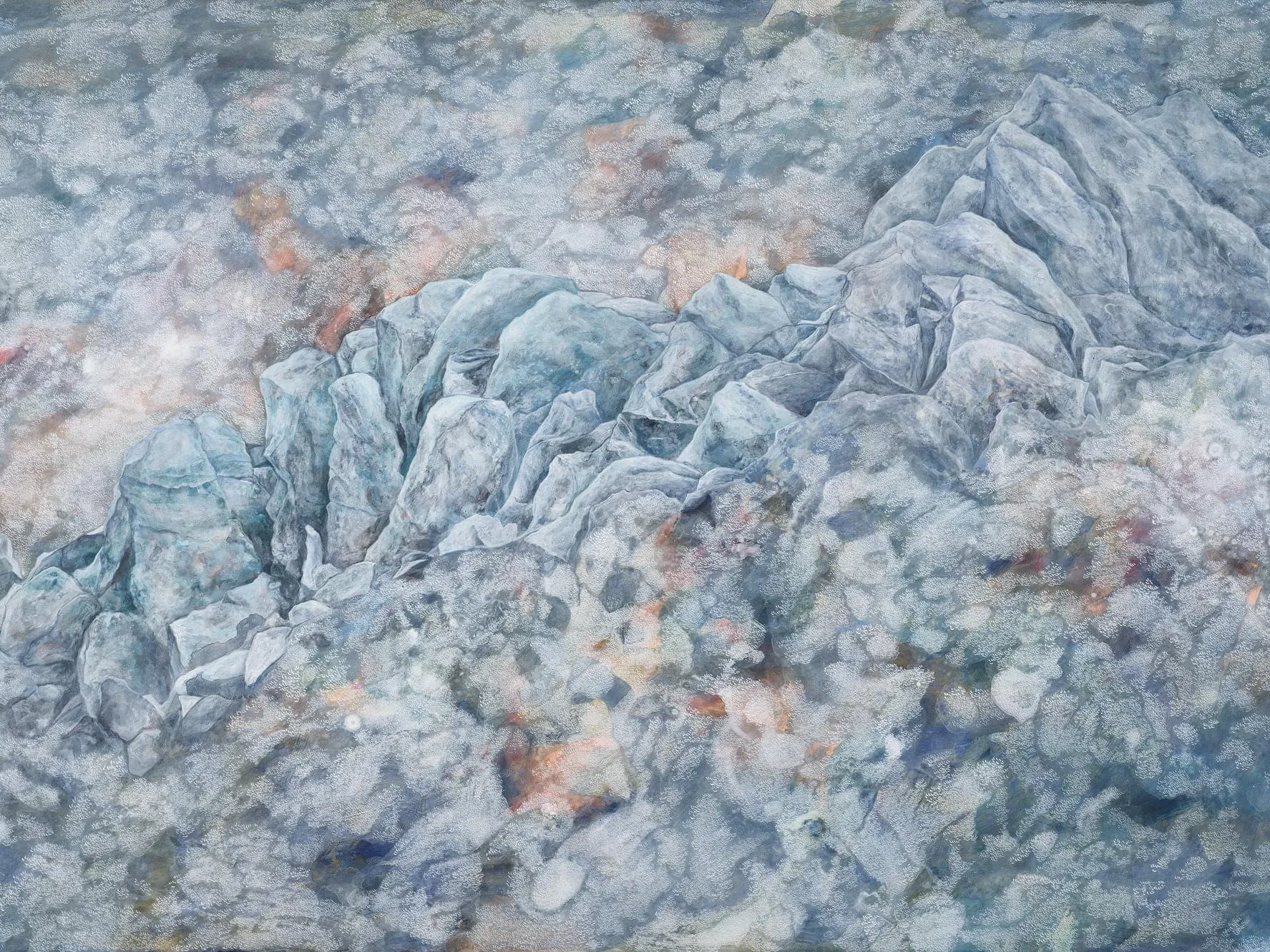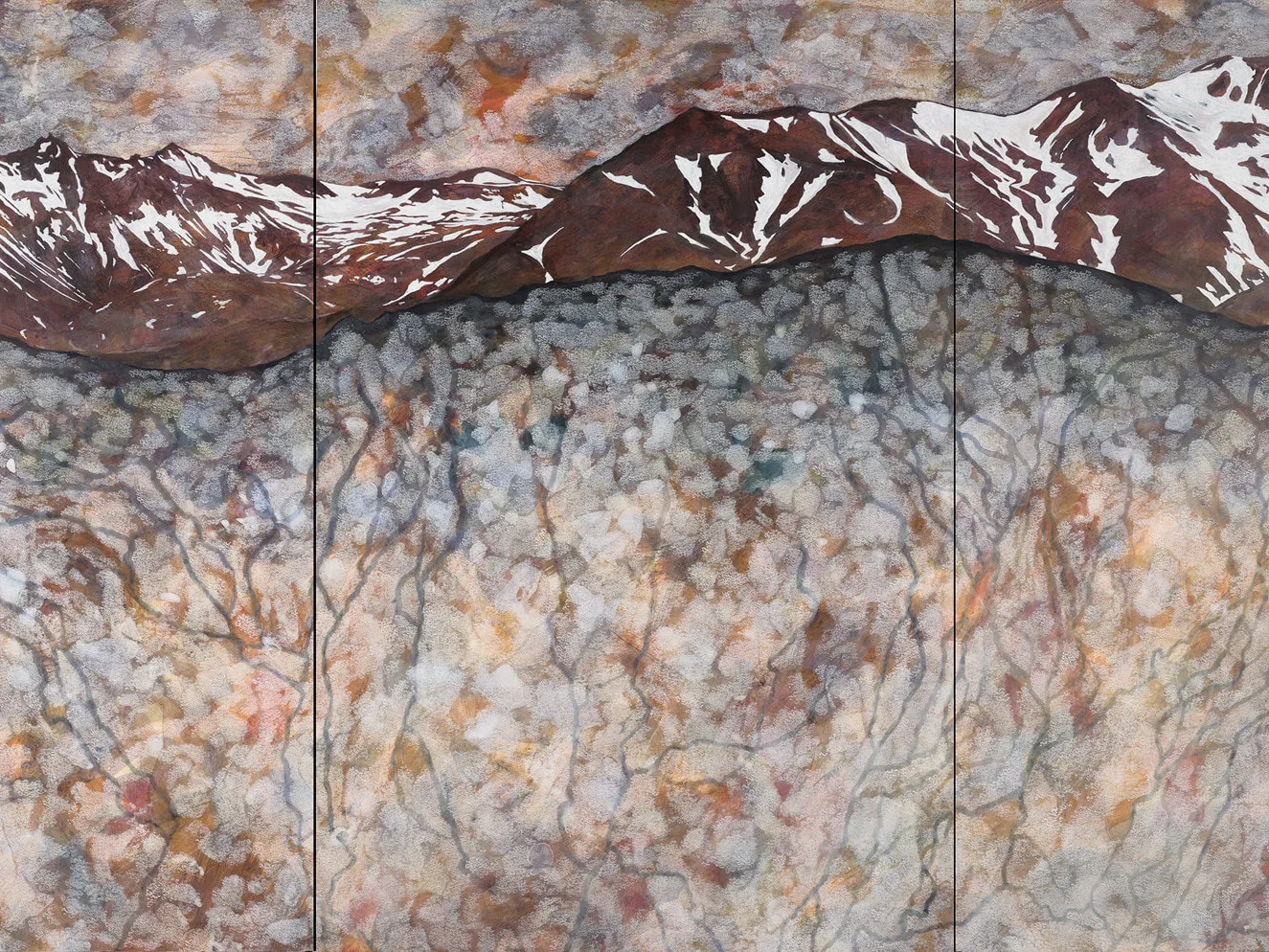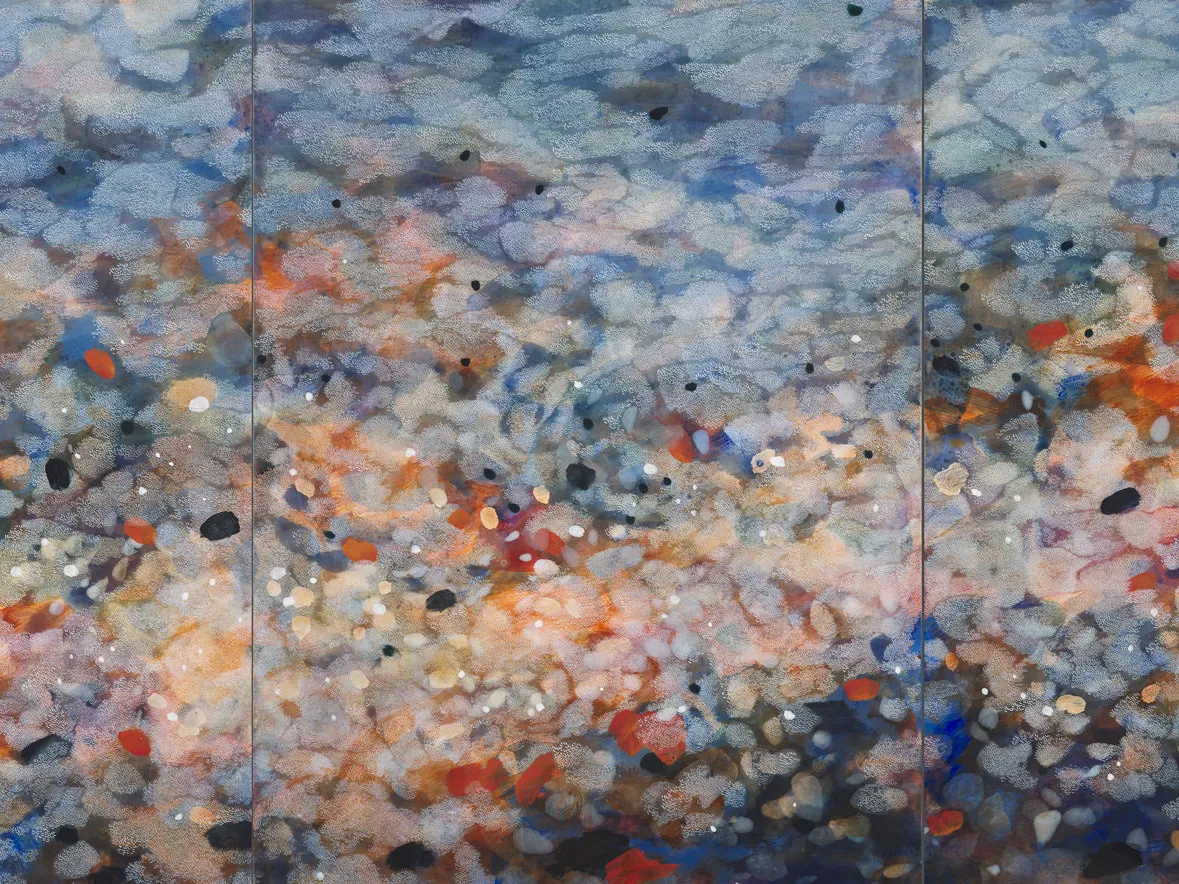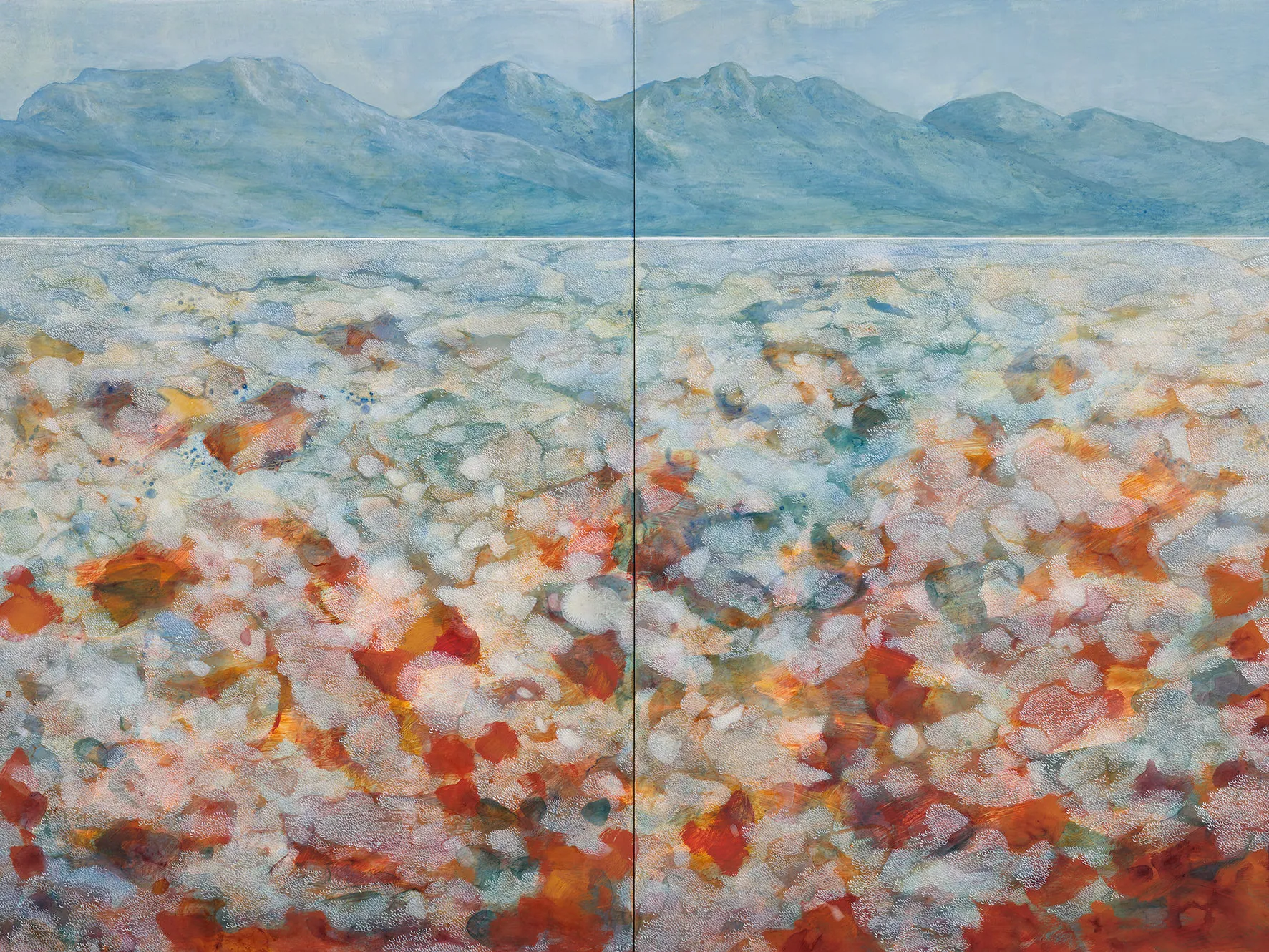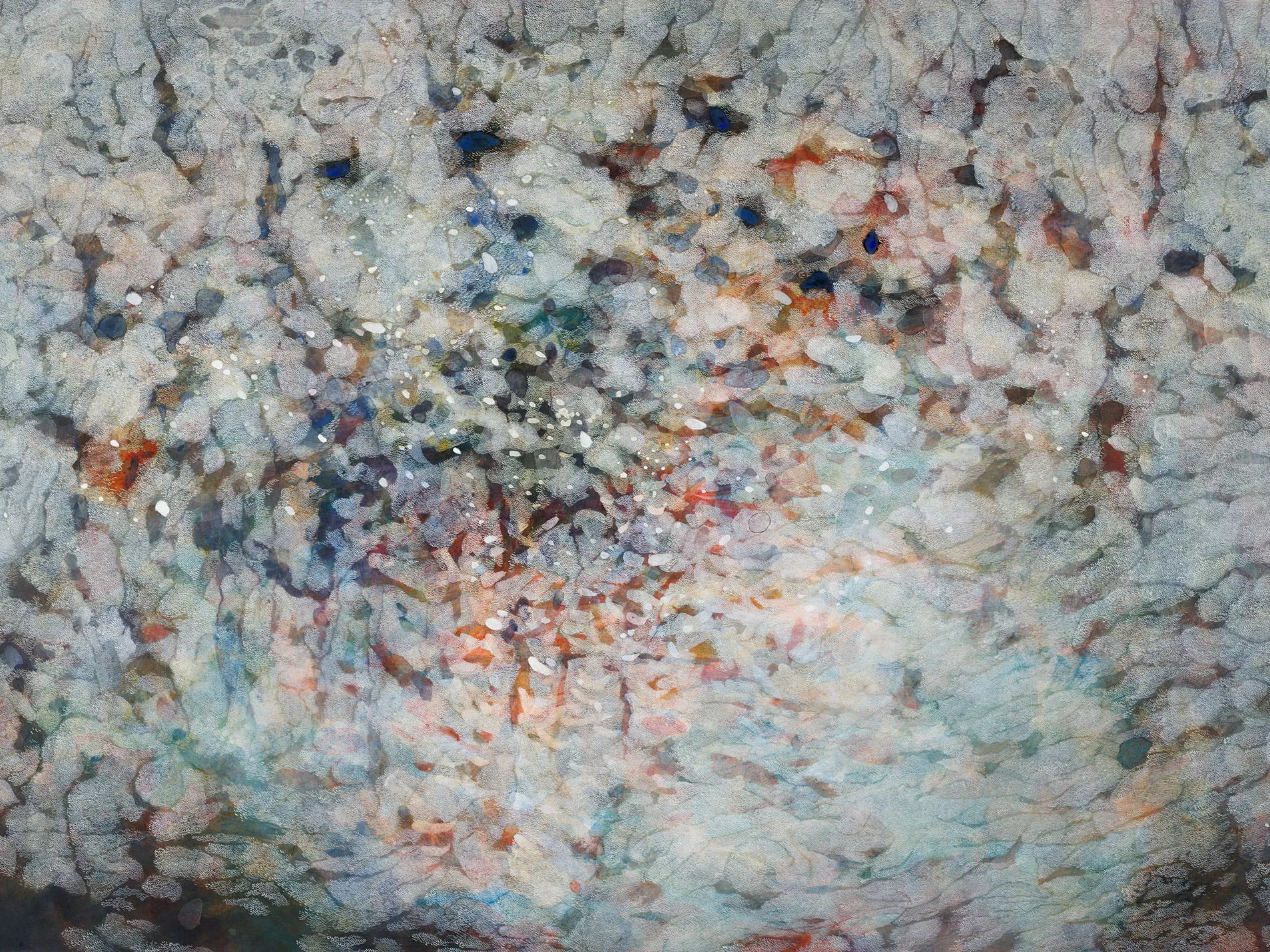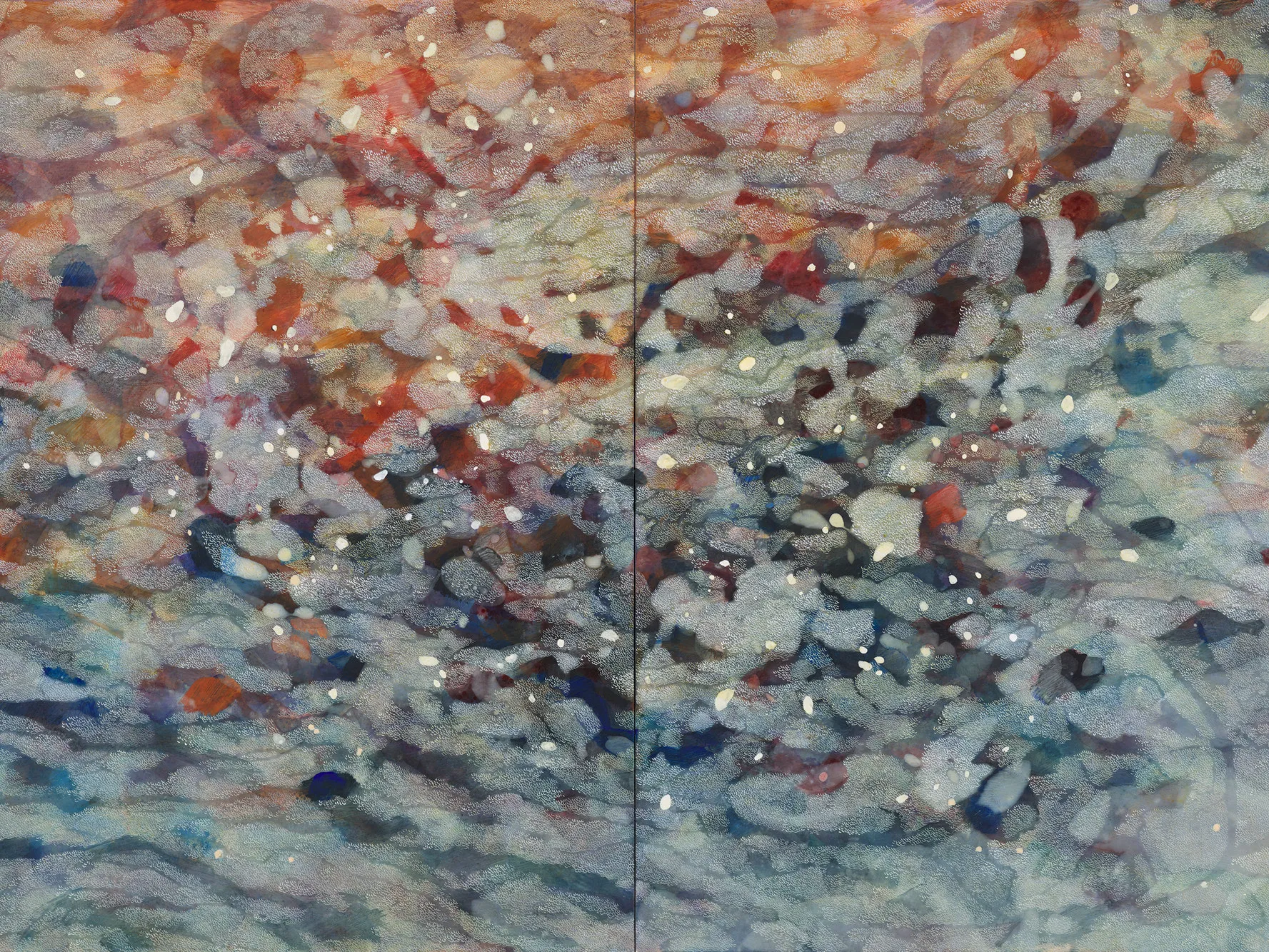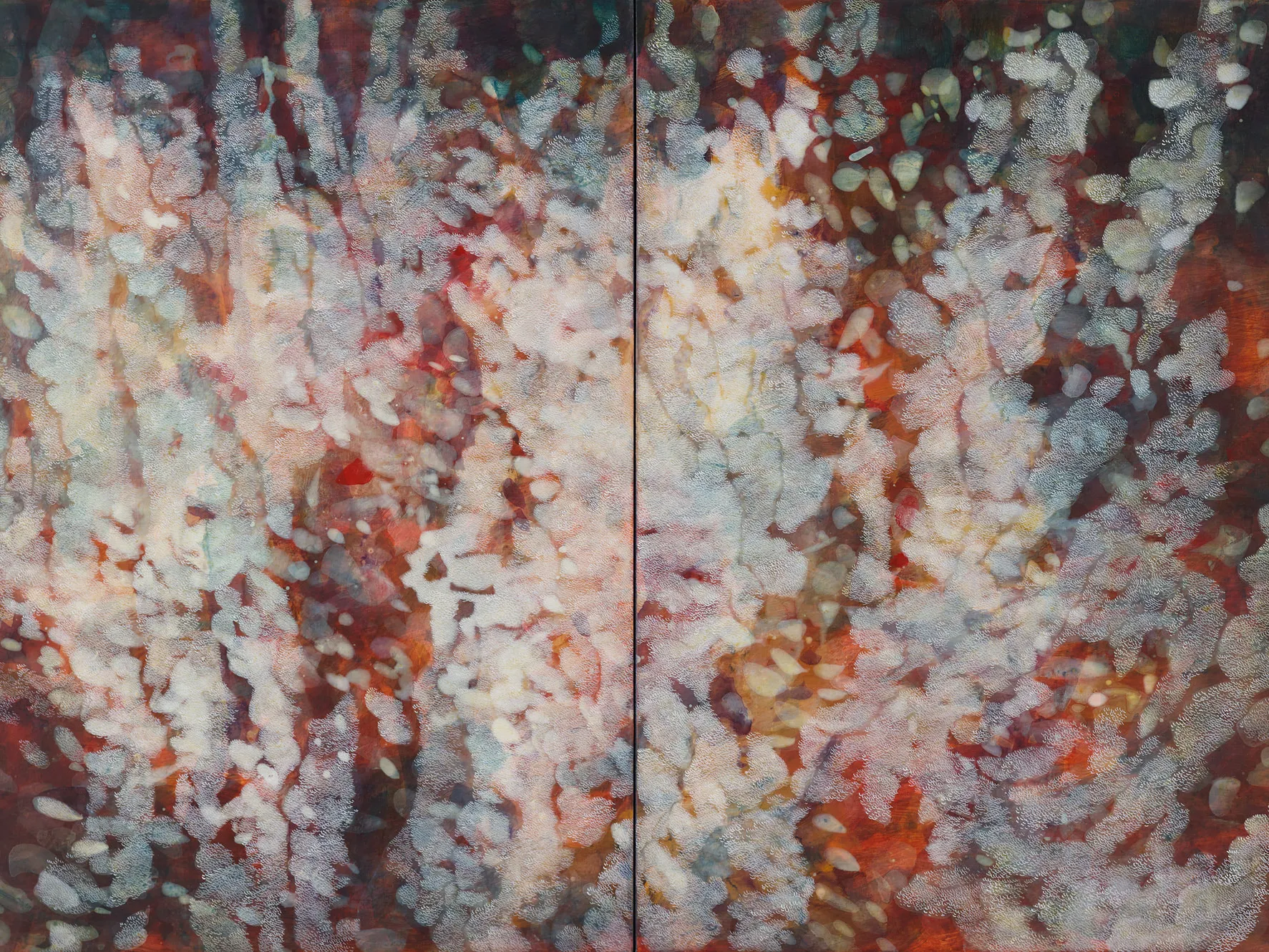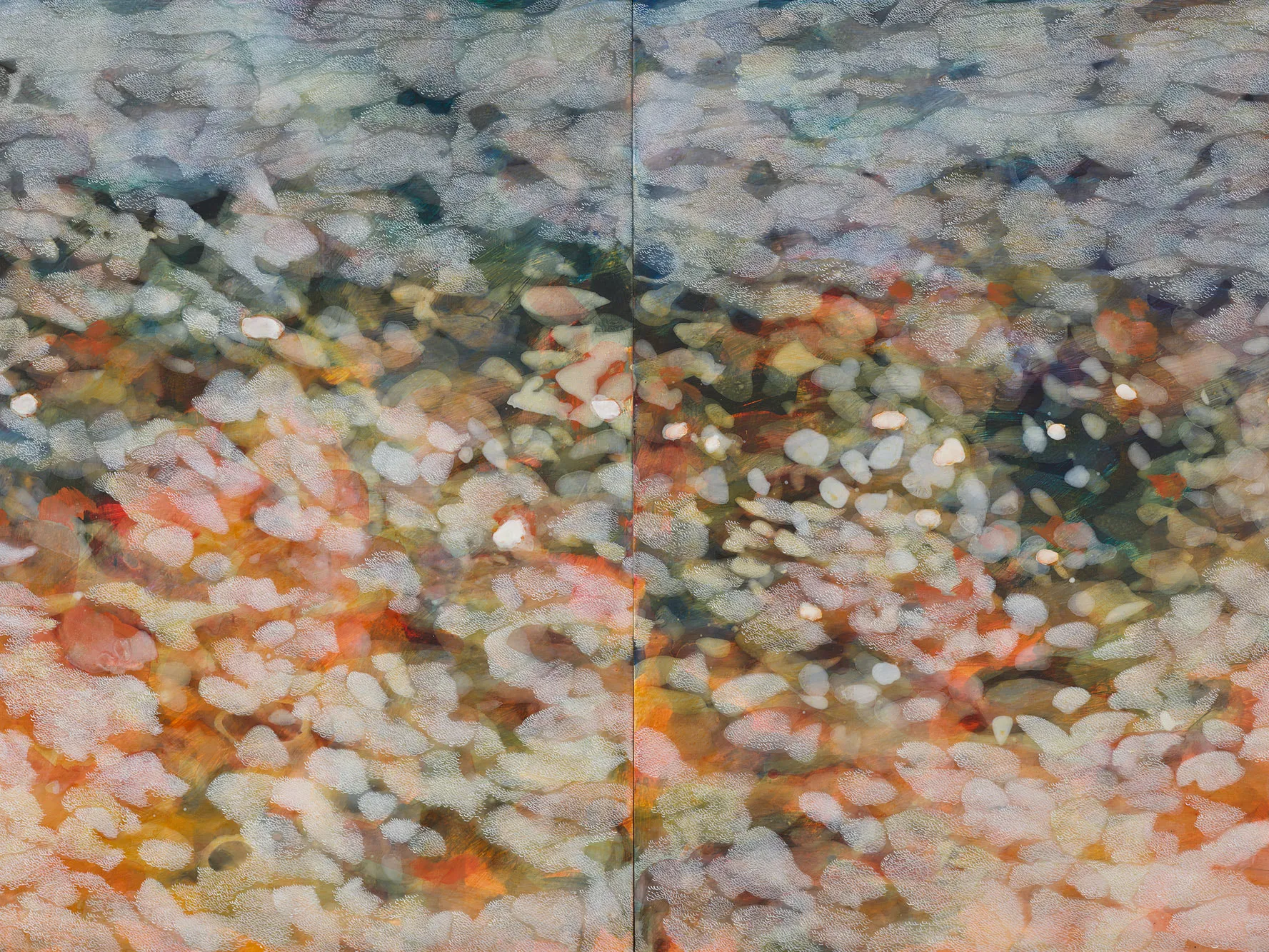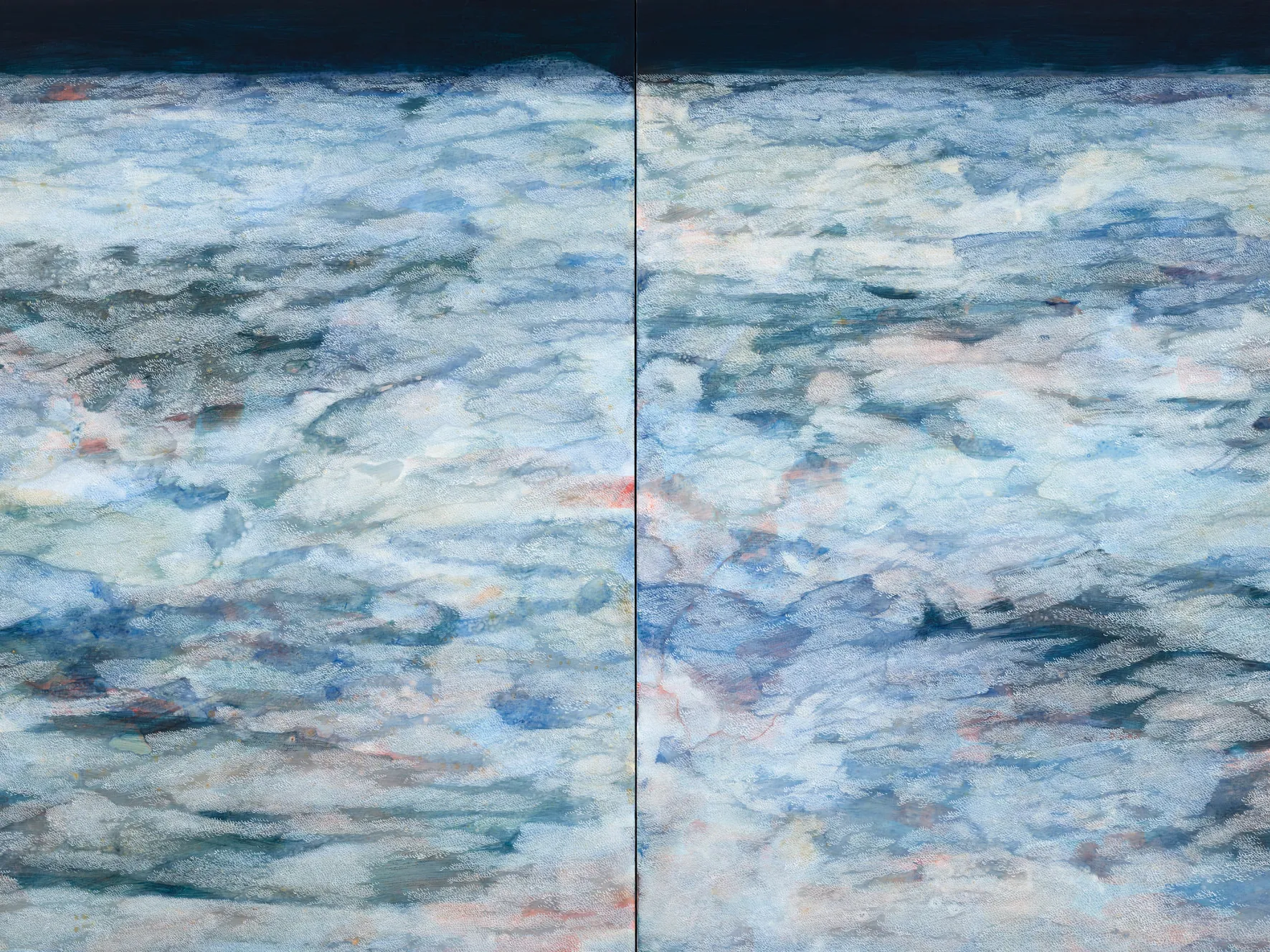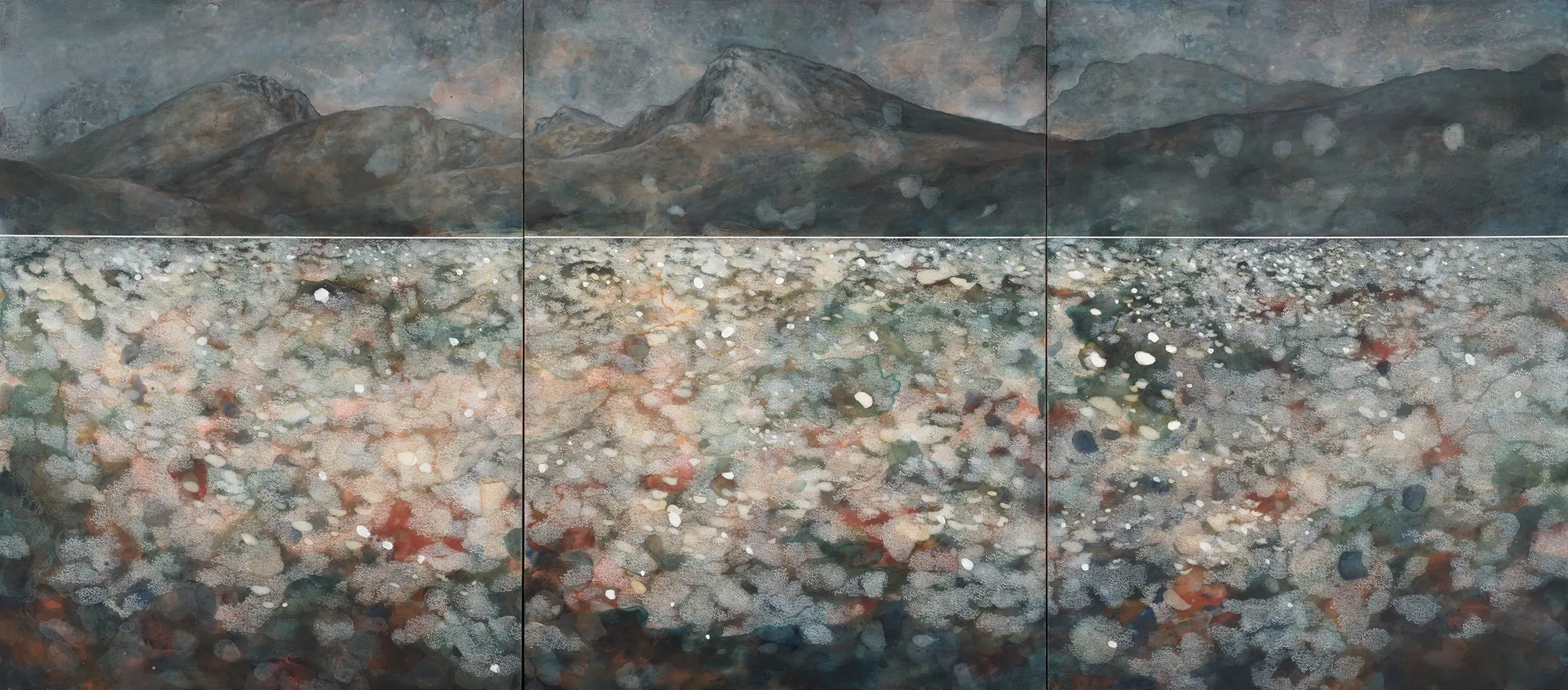
Solo Exhibition, Slow Water
Solo exhibition at Beaver galleries in Canberra, Australia
May 11-17, 2023
Slow Water
I have been fascinated with looking into and within water for a while now. There is an inherent abstraction in the mesmerising patterns of light and shadow that play out on the surface in a constant state of flux and transience that I find compelling. Water keeps drawing me back in. It conjures a state of reverie and contemplation.
I think of the surface of water as a threshold space, a place of liminality, an intermediate or transitional space between the known and unknown, between the cacophonous sounds of life above and the imperceptible sounds below. The linear tracery of ripples and shadows on the surface echoes a planar view of river systems in the landscape, patterns of veins or wrinkled skin.
Most recently I’ve been thinking about the rhythm of my painting process, in particular the repetitive act of painting thousands of tiny brush marks that have become a kind of signature mark making in my paintings. For me, painting them reflects a pace that echoes the rhythms of the body - the pulse of the heartbeat, the steady rhythm of breathing or the quiet repetition of footfall while walking through the landscape. The accumulation of these tiny lines creates a sequential field of marks reminiscent of the minute ripples of light and shadow on the surface of water that is both minute and expansive at the same time. They are the pulse of the landscape in a flow of continuity - shuddering and vibrating with life, sound and energy, which in turn is perceived and experienced within and throughout the body. Sometimes I think of my paintings as a sound score to the pulse of water.
These paintings are about a state of mind - a way of being in and within a landscape, of sitting still for long enough to perceive a place resonate within one’s own body, as much as they are reflections on the life of water.
“If you would experience a landscape, you must go alone into it and sit down somewhere quietly and wait for it to come in its own good time”Paul Gruchow, The Necessity of Empty Places, 1988
